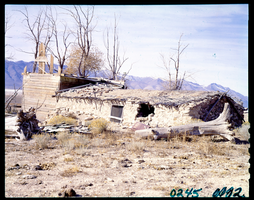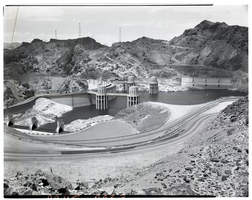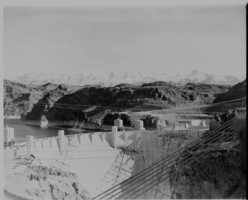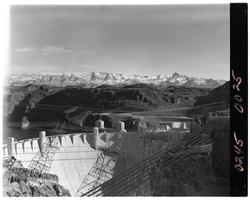Search the Special Collections and Archives Portal
Search Results

Film transparency of the Old Buck Station, Newark Valley, Nevada, 1955
Date
Archival Collection
Description
Image

Film transparency of the Old Buck Station, Newark Valley, Nevada, 1955
Date
Archival Collection
Description
Image

Film transparency of the Tropicana Hotel's float entry in the Helldorado Parade, Fremont Street, Las Vegas, Nevada, May, 1957
Date
Archival Collection
Description
Image

Film transparency of the face of Hoover (Boulder) Dam, taken from the downstream side of the dam on the Arizona side, May, 1947
Date
Archival Collection
Description
Image

Film transparency of Hoover (Boulder) Dam, taken from the upstream side of the dam on the Arizona side, May, 1947
Date
Archival Collection
Description
Image

Film transparency of the face of Hoover (Boulder) Dam, taken from the downstream side of the dam on the Nevada side, May, 1947
Date
Archival Collection
Description
Image

Film transparency of the face of Hoover (Boulder) Dam, taken from the downstream side of the dam on the Nevada side, May, 1947
Date
Archival Collection
Description
Image
Clinton Wright and Aaron Mayes oral history interview
Identifier
Abstract
Oral history interview with Clinton Wright and Aaron Mayes conducted by Barbara Tabach on February 21, 2017 for the African Americans in Las Vegas: a Collaborative Oral History Project. In this interview, Wright discusses being a photographer of the Westside community in Las Vegas, Nevada. He recalls creating his first photographic prints, being a freelance photographer, and experimenting with photography techniques. Wright talks about his employment with the
Archival Collection
Eddie Hawk Jim Family Papers
Identifier
Abstract
The Eddie Hawk Jim Family Papers (1891-2011) contain newspaper clippings, photographs, school, cemetary, and census records pertaining to the Jim family, a Paiute family from the Pahrump, Nevada region. The newspaper articles document the general public's perspective of events involving the Paiute people living in the Pahrump Valley region. The photographs depict Mary Scott, Alice Jim, Long Jim, and other relatives of the Jim family during the 1940s and 1950s. Additional photographs include a larger group of tribal members gathered in 2011 at Mt. Charleston, Nevada. These papers have been gathered by the Jim family as the foundation of a Pahrump Paiute Tribal Archive that other members may build upon. This collection consists entirely of digital surrogates.
Archival Collection
Morton "Mort" Saiger Portraits and News Articles
Identifier
Abstract
The Morton "Mort" Saiger Portraits and News Articles (1960-1987) consists of four newspaper and journal articles about Saiger and the Last Frontier Hotel Casino, two professional photographic portraits of Saiger, and a presentation plaque from the International Golf Club.
Archival Collection
